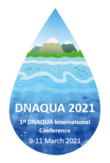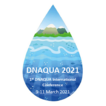In this collection

|
Papers published: 72 Documents added: 0 Total pages: 168 Printed version: Paperback Unique views: 93390 Total views: 139173 |
Environmental DNA as a tool in molecular ecology resulted in promising success with detection in higher precision rates and easier field protocols compared to traditional field surveys in aquatic ecosystems. Moreover, after the enhanced progress in the high throughput sequencing technologies, bioassessment of entire communities from related habitats from single or pooled PCR also becomes available without any prior knowledge on the species inhabiting the environment. One of the main challenges in eDNA studies is that the DNA extracted from potentially inhibiting agent rich environmental samples are mostly short and degraded fragments and thus requiring protocol adjustment accordingly. This session will try to highlight outcomes of all possible scenarios and discuss scientific data related to variables such as effects of sampling, filtration, storage conditions, extraction method, primer design/using universal primers, PCR (conventional, quantitative or digital), sequencing (Sanger, pyrosequencing, high throughput).

